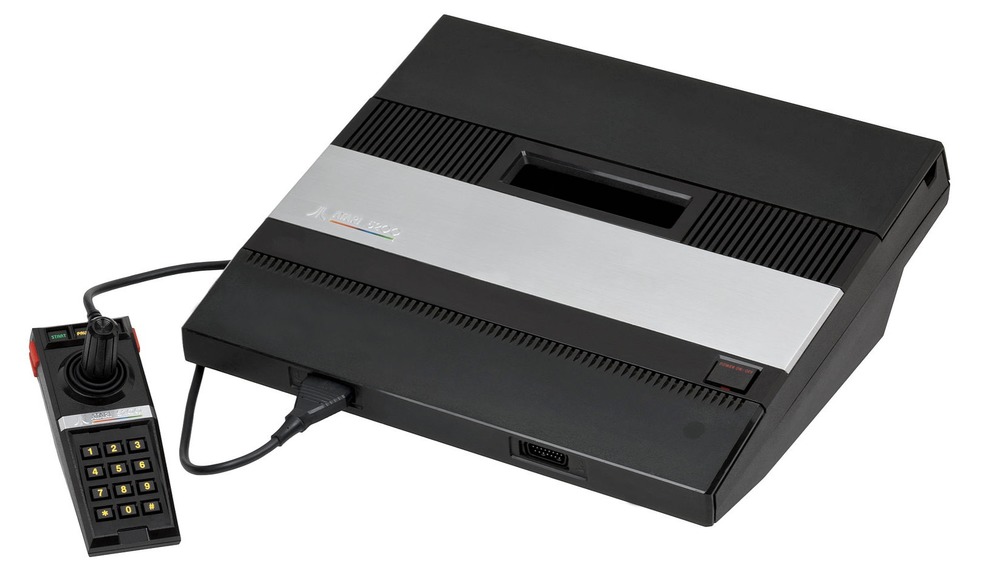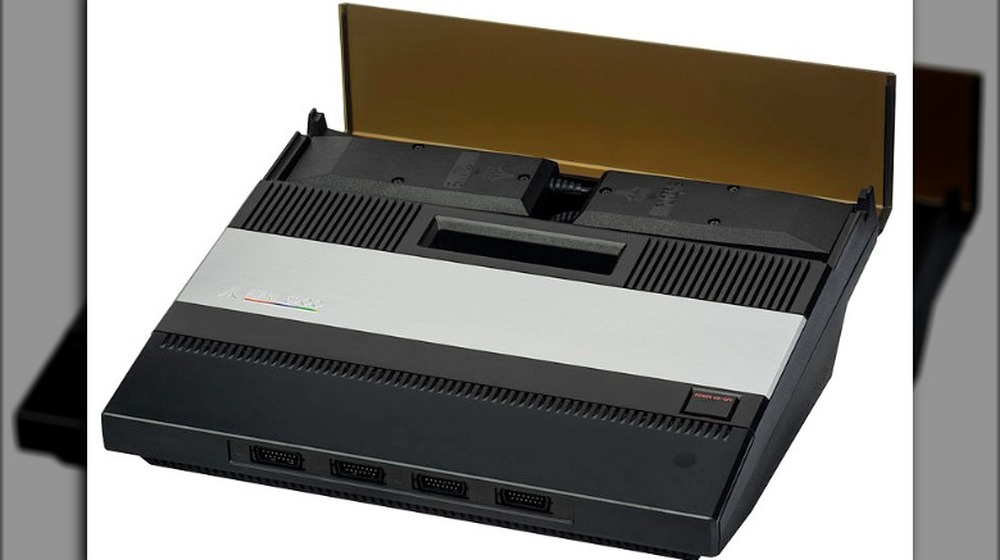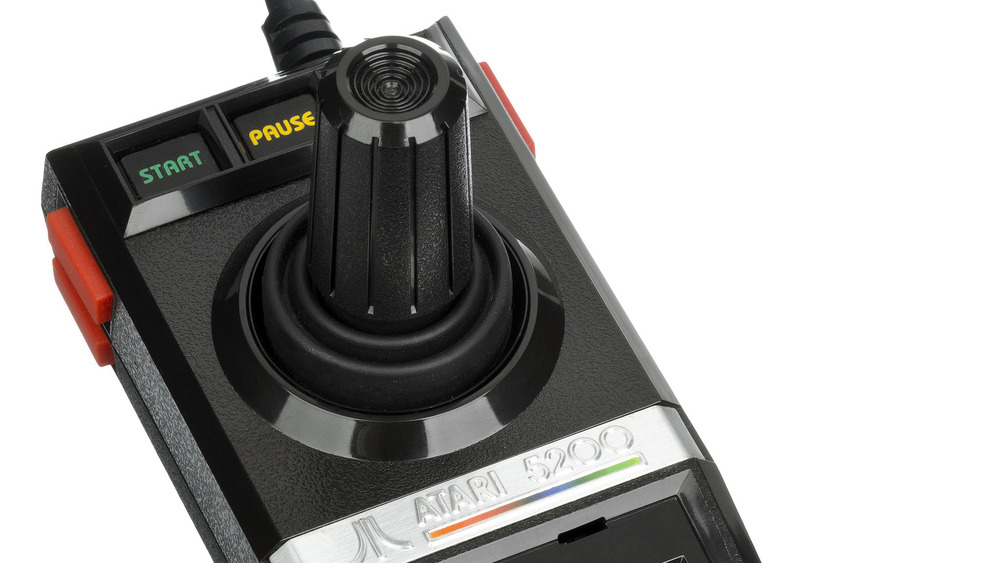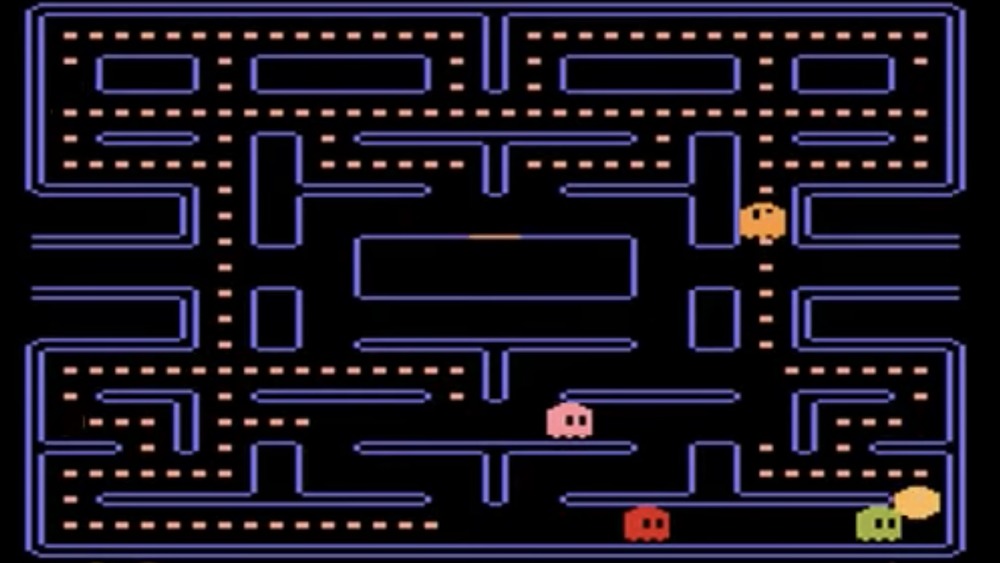This Is Why The Atari 5200 Ultimately Failed
Ah, the halcyon days of Atari. They were short-lived, but there was a period of time when it seemed like home gaming's first big trailblazer could do no wrong. The Atari 2600 is often credited with establishing the fledgling video game industry and making it possible for entire companies, like Sega and Activision, to pop up and become profitable. But Atari's missteps were as heinous as its triumphs were groundbreaking, and the Atari 5200 SuperSystem, sadly, was one of those unfortunate mistakes.
This system was released in November 1982, even as the beloved Atari 2600 was still going strong. It was retired in May 1984, less than two years later. And if you understand your video game history, you'll know that this was probably related to the great North American video game crash of 1983. Clearly, the Atari 5200 was a symptom of the problems that led to the crash — but the crash also did the system in, sounding its death knell clearly and loudly. Why did the Atari 5200 fail so badly? It was a perfect storm of factors.
The hardware was clunky and too similar to other Atari products
Any discussion of the Atari 5200's shortcomings has to include analysis of its hardware, which SBNation reports had similar specs to the Atari 2600 but couldn't play any of its games — at first, anyway. It had a sleek, futuristic design (as envisioned circa the '80s), and its technology was based on Atari's 8-bit computer line. It had 16K of RAM, 256 colors, a top-of-the-line processor, and well-respected graphics chips. But it was huge – fans who've measured their units say it clocks in at 13 inches in width, 15 inches in length, and 4.5 inches in height.
The unit was created as a competitor to the Intellivision but ended up mostly competing with the ColecoVision console that had released just before it. And, rather than replacing the Atari 2600, the company presented it as a higher-end upgrade. Yeah, there's a reason Sony, Microsoft, and Nintendo don't do this sort of thing today. The fact that Atari had multiple machines with not enough differentiation out at the time (the 2600, the 5200, the 400, and the 800) may have been a factor in its demise.
The controllers were legitimately terrible
Check any retrospective on the Atari 5200, and you'll see a unanimous opinion: No one likes the game controller. Eschewing the simple joystick-and-button design of the Atari 2600 controller in favor of a more Intellivision-like look complete with a number pad, the controller was undeniably innovative – it had an analog, 360-degree, speed-sensitive joystick and start, pause, and reset buttons, too. However, the keypad and fire buttons didn't work very well, and the joysticks wouldn't self-center. Forget precise movement.
Today's retro gamers have come up with fascinating ways to jury-rig the controllers so that they actually work. AtariHQ starts out its page on the issue by noting that most people are aware of the 5200 controller "curse" and advising, "Pay attention the next time you're sitting around the campfire with your fellow gamers; I'll bet you hear at least 3 tales of 5200 sticks that are possessed by some evil entity or demon."
Word has it that Atari was working on improved joysticks before they decided to give up on the 5200 altogether. Although the company did improve on parts of the Atari 5200 during its short life span, the controllers remained an issue.
The games looked good but were simply rehashes
One of the main faults of the Atari 5200 was its early library of games. In the end, only about 70-odd titles were released for the system, and plenty of those were games that were just better, prettier versions of 2600 titles – Pac-Man, Pitfall, Frogger, Defender, Space Invaders, and Galaxian among them. They were good games that some fans even called "fantastic" when enhanced, but there wasn't much that was new. Coveted games from the era, such as Donkey Kong, BurgerTime, and Tapper, were ColecoVision staples that never came to the 5200, although they were released for the Atari 2600.
The Atari 5200 lineup was beefed up later with solid new games such as Qix, Joust, Space Dungeon, and Ms. Pac-Man – but by the time the 5200 had a good library going, the damage had already been done. Despite Atari having other 5200 games that were in the pipeline, it was too late for the system.




